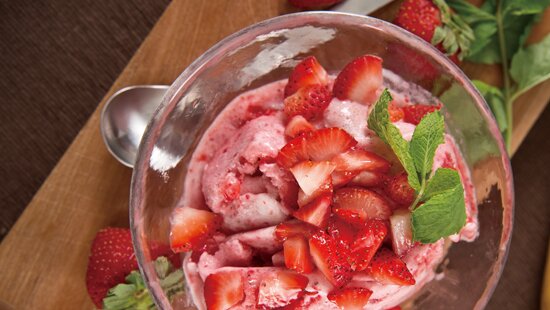In recent years many families have bought ice-cream makers to make their favorite ice-creams at home. Ice-cream without dairy ingredients can also be tailor-made for those who are allergic to milk products. However, the Consumer Council would like to alert consumers to be careful when handling and picking ice-cream ingredients, including milk and eggs, to avoid Salmonella and Listeria monocytogenes contamination.
Furthermore, to help consumers select the right ice-cream makers, the Council has recently reviewed 20 models of 3 main types of ice-cream makers available in the market, including the built-in freezer type, the freezer bowl type and frozen dessert makers.
While many homemade ice-cream recipes suggest using raw eggs, eating raw or under-cooked eggs may lead to foodborne diseases such as Salmonella infection. According to information provided by the Department of Health, there were 38 cases of Salmonella infection in the past 5 years which were resulted from intake of egg products. Victims usually had symptoms like diarrhea, and the infection could cause death in many severe cases.
Consumers should avoid purchasing eggs with moist shell or cracked eggs. Eggs should also be stored in a refrigerator and consumed before the expiry date, while those smelling bad or having black or green spots in the egg liquid should be discarded straight away. Actually, consumers may consider using sterile and instant-use egg powder, custard powder or ice-cream premix powder instead of fresh eggs for preparing homemade ice-cream. They may also choose pasteurized eggs but the cost can be higher. For high risk individuals, the safest way recommended by the U.S. Food and Drug Administration is to heat egg base made up of fresh eggs and dairy products at approximately 71 to 80°C in a water bath for 10 to 30 minutes. This will kill pathogenic bacteria without affecting the texture and flavor of the ice-cream.
The most common food safety problem related to dairy products is contamination of Listeria monocytogenes, which are able to survive and reproduce below 0°C. In fact, incompletely sterilized milk and their products are classified as high risk food, especially the high risk individuals could face severe consequences of taking listeria contaminated food. The mortality rate could be as high as 30%. It also poses risk of miscarriage on infected pregnant women.
Milk sold in Hong Kong are all sterilized. Consumers should check that packaging is intact and expiry date is not due before purchase, and store the milk and dairy products at an appropriate temperature after purchase in order to minimize food safety risk.
Consumers are also reminded to keep homemade ice-cream at -18°C or below and consume them as soon as possible, preferably within a week. Once the ice-cream is thawed, throw it away and do not refreeze melted ice-cream.
International Consumer Research & Testing tested homemade ice-cream makers sold in Europe last year and found that the models generally performed well and easy to use and clean.
The Consumer Council has reviewed 20 models of homemade ice-cream makers available in Hong Kong with price ranging from HK$199 to HK$6,288. Built-in freezer ice-cream makers, usually sold at a higher price, are able to create their own freezing power. Users just pour the ingredients or ice-cream mixture into the machine and set the desired time or operation mode, the machine will freeze the mixture into ice-cream. There is no pre-freezing of the freezer bowl or ingredients required.
On the other hand, freezer bowl ice-cream makers cannot create freezing power. Therefore the ice-cream bowl has to be pre-frozen for around 8 to 24 hours before the ice-cream making, hence it is more complex. The texture of the ice-cream produced are also fairly soft. It should be transferred to a clean container and store in the freezer for 1 or 2 hours before serving.
Since homemade ice-creams are free from stabilizers and additives, they melt more rapidly than ice-cream sold in the market and hence should be consumed as soon as possible.
Here are some tips for using homemade ice-cream makers:
- Prepare the ingredient portions according to the instruction manual and recipe;
- Dry the outer surface of the ice-cream bowl thoroughly before use to avoid ice forming during the freezing process, otherwise, the bowl could be hard to remove from the machine;
- The longer the churning time, the harder the texture of the ice-cream;
- For the freezer bowl type, keep an eye on the ice cream maker especially as it is churning because a paddle that get frozen may become stuck or stick to the bowl, shutting the machine down as a result;
- Remove the stones of the fruits before putting them into the frozen dessert makers;
- To prevent growth of bacteria, all parts of the machine must be cleaned thoroughly after use, in particular the gap between the blades.
The Consumer Council reserves all its right (including copyright) in respect of CHOICE magazine and Online CHOICE ( https://echoice.consumer.org.hk/ ).



